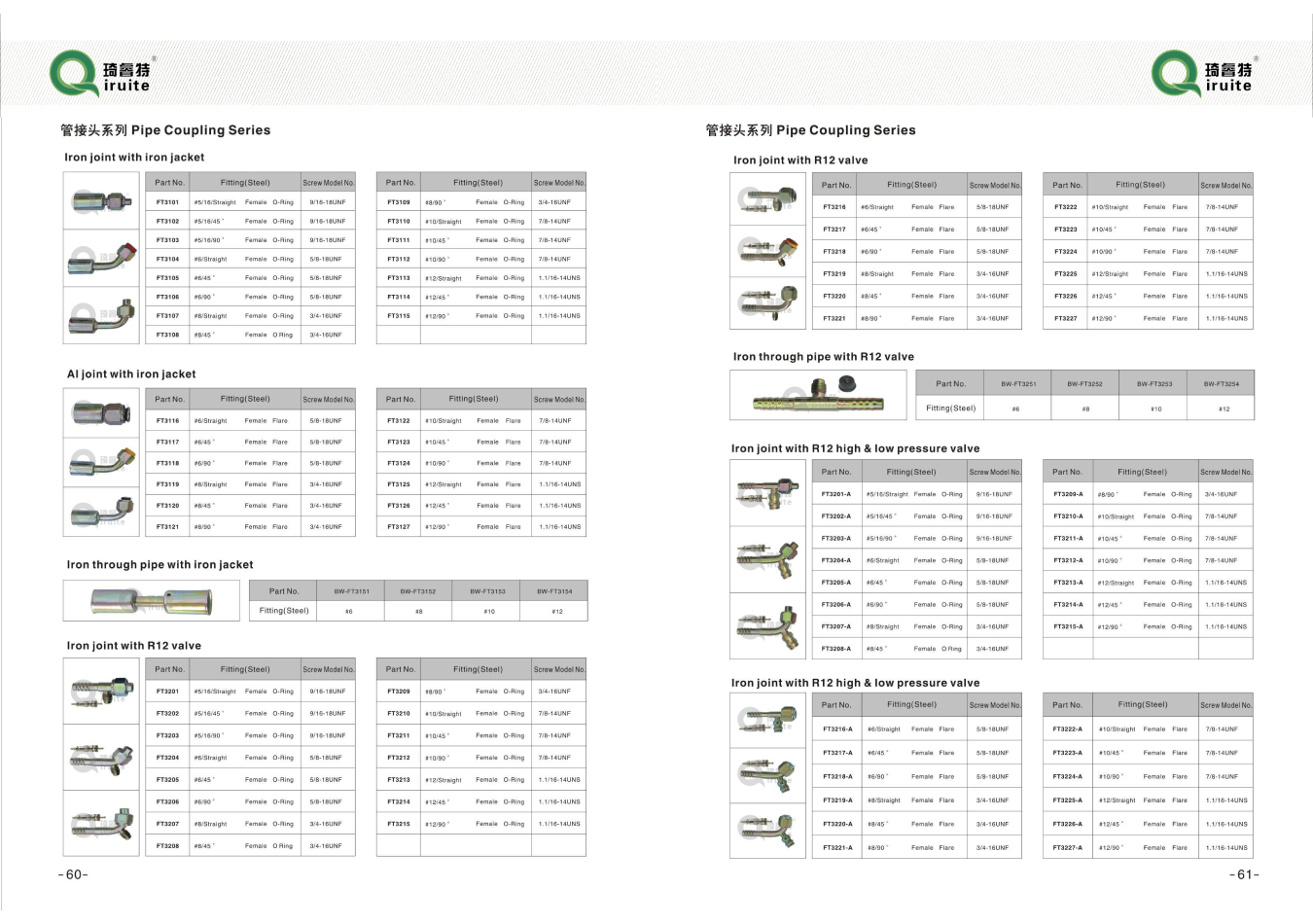power steering fluid pressure hose
Understanding Power Steering Fluid Pressure Hose Key Components for Efficient Steering
Power steering systems have become an essential feature in modern vehicles, providing drivers with the ease of steering necessary for optimal control and safety. At the core of this system lies the power steering fluid pressure hose, a crucial component that plays a pivotal role in the overall functionality of power steering. This article delves into the characteristics, functions, maintenance, and replacement considerations regarding power steering fluid pressure hoses.
What is a Power Steering Fluid Pressure Hose?
The power steering fluid pressure hose is a flexible tube structure designed to carry hydraulic fluid from the power steering pump to the steering gear. This fluid serves a dual purpose it not only transfers pressure but also lubricates the steering components, ensuring smooth operation. These hoses are typically constructed from durable materials, such as rubber or reinforced synthetic compounds, designed to withstand high pressures and temperatures associated with hydraulic systems.
How It Works
In a conventional hydraulic power steering system, when the driver turns the steering wheel, the power steering pump pressurizes the hydraulic fluid. This pressurized fluid is conveyed through the power steering fluid pressure hose to the steering gear. The fluid flows into a piston located within the steering gear, facilitating the effortless movement of the steering system, thereby reducing the effort required by the driver to turn the wheel. Upon exiting the steering gear, the fluid returns to the pump through a return hose, and the cycle repeats.
Importance of the Power Steering Fluid Pressure Hose
The power steering fluid pressure hose is vital for several reasons
1. Efficient Steering Response A reliable pressure hose ensures that the hydraulic fluid is transported efficiently, allowing for immediate response to driver input. If the hose is compromised, it can lead to delayed steering response, which may compromise vehicle control.
2. Safety Concerns A failure in the power steering system can lead to a loss of steering capability, significantly increasing the risk of accidents. Regular inspection of the power steering fluid pressure hose is crucial for preventing potential failures.
power steering fluid pressure hose

3. Cost-Effectiveness Maintaining the integrity of the power steering hose can minimize costly repairs. A ruptured or leaky hose can cause a loss of hydraulic fluid, leading to pressure loss, which can result in severe damage to the power steering pump and steering gear.
Signs of a Failing Power Steering Fluid Pressure Hose
Recognizing the signs of a failing power steering fluid pressure hose early can help in addressing the issue before it becomes critical. Common indicators include
- Fluid Leaks Puddles of hydraulic fluid beneath the vehicle can signal a damaged hose. - Steering Difficulties If you notice increased resistance when steering, it could be due to insufficient fluid pressure caused by a faulty hose. - Unusual Noises A whining or groaning sound when turning the steering wheel may indicate a problem within the hydraulic system, often linked to the power steering pressure hose.
Maintenance and Replacement
To ensure the longevity of the power steering fluid pressure hose, regular maintenance is key. This includes checking for signs of wear, cracks, or leaks, as well as ensuring proper fluid levels in the power steering reservoir. Additionally, the power steering fluid should be replaced periodically, as contaminants can build up over time, leading to hose deterioration.
When replacing a power steering fluid pressure hose, it is crucial to use high-quality parts that meet or exceed manufacturer specifications. This ensures optimal performance and longevity of the power steering system.
Conclusion
The power steering fluid pressure hose might be a small component in the grand scheme of a vehicle's steering system, but its role is undeniably significant. Understanding its function and maintenance can follow suit to enhance driving safety, performance, and comfort. By being proactive about inspections and addressing issues promptly, drivers can ensure a reliable and efficient steering experience, keeping both themselves and others safe on the road.
-
Ultimate Spiral Protection for Hoses & CablesNewsJun.26,2025
-
The Ultimate Quick-Connect Solutions for Every NeedNewsJun.26,2025
-
SAE J1401 Brake Hose: Reliable Choice for Safe BrakingNewsJun.26,2025
-
Reliable J2064 A/C Hoses for Real-World Cooling NeedsNewsJun.26,2025
-
Heavy-Duty Sewer Jetting Hoses Built to LastNewsJun.26,2025
-
Fix Power Steering Tube Leaks Fast – Durable & Affordable SolutionNewsJun.26,2025

